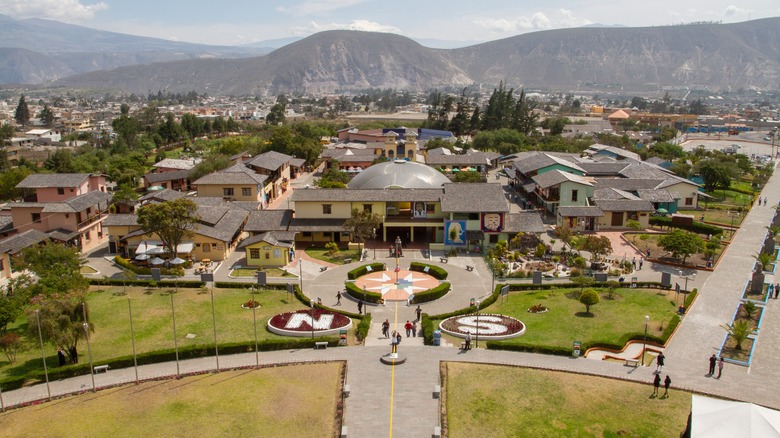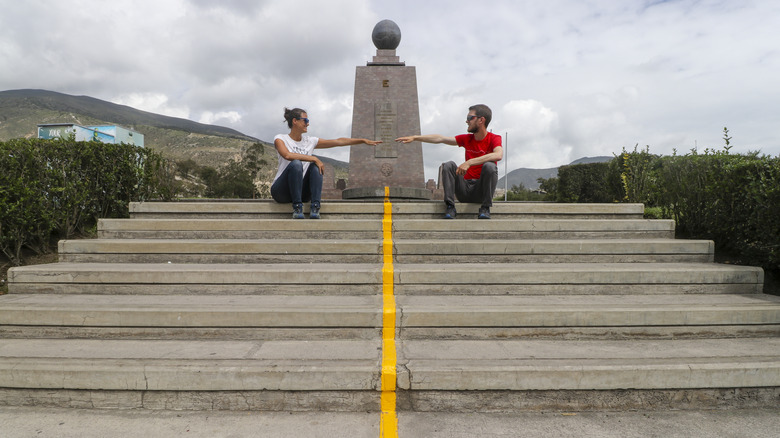One Of The World's Most Disappointing Attractions Is A Yellow-Lined Plaza In The Heart Of Ecuador
Just north of Quito, Ecuador, lies one of the most disappointing tourist attractions in the world. An entire plaza complete with a 100-foot-tall monument, souvenir shops, and a thick yellow line cutting across the ground to mark the equator, "La Mitad del Mundo" ("The Middle of the World") is one of Ecuador's most promoted tourist attractions. In fact, tourists from all over the globe flock here to snap photos with one foot in the north and one in the south. However, here's the catch: The line is actually in the wrong place.
Widely marketed as the literal "center of the Earth," it turns out that the yellow line is actually 656 feet off the real equator when measured using modern GPS. Still, the plaza — originally designed in the 1930s and rebuilt in the 1970s — continues to draw visitors from all over, even though the so-called "Mitad del Mundo" might be the most literal example of missing the mark.
Despite the inaccuracy, the 18th century French Geodesic Mission that worked to calculate the Earth's shape and locate the equator is still a source of historical significance. And the towering monument at "La Mitad del Mundo" is a commemoration of Ecuador's scientific and cultural contributions. At the entrance, you can even find busts of the members of this excursion, and many other participating countries are honored there as well.
Seeing the actual middle of the world in Ecuador
Once you've snapped a photo and maybe bought a "Mitad del Mundo" magnet, there's little to do at the square beyond wandering through souvenir stalls or sipping a Coca-Cola while watching others strike a pose. The monument's museum is modest, but that's not to say it's without charm, and the views of the Andes are stunning. However, for those who arrive expecting a profound moment at the Earth's midpoint, the visit can feel anticlimactic.
This isn't to say we don't recommend Ecuador. Stunning destinations — like the Avenue of the Volcanoes, where towering peaks create dramatic landscapes — are a must-visit for those traveling around the country. For adrenaline lovers, Baños — known for its abundance of waterfalls, rainforest, and adventure trails — offers thrilling experiences. Also, the real equator, pinpointed with the help of satellites, cuts through a much humbler site nearby at the Museo Inti Ñan, which rouhgly translates to "Museum of the Sun's Path" from Quechua. Less commercial and more educational, the museum offers exhibits on pre-Columbian cultures, astronomy, and local traditions, and also explains the equator's role in human history and navigation.
That said, if South America isn't in your plans, you'll be happy to know that the equator actually crosses 13 countries in total — which means you can tick it off your bucket list somewhere else. For instance, towns like Nanyuki, in Kenya, have marked equator signs and roadside stops where tourists can take photos and watch demonstrations similar to those in Ecuador. All while enjoying much more comprehensive itineraries that include safari tours or Mount Kenya treks.

